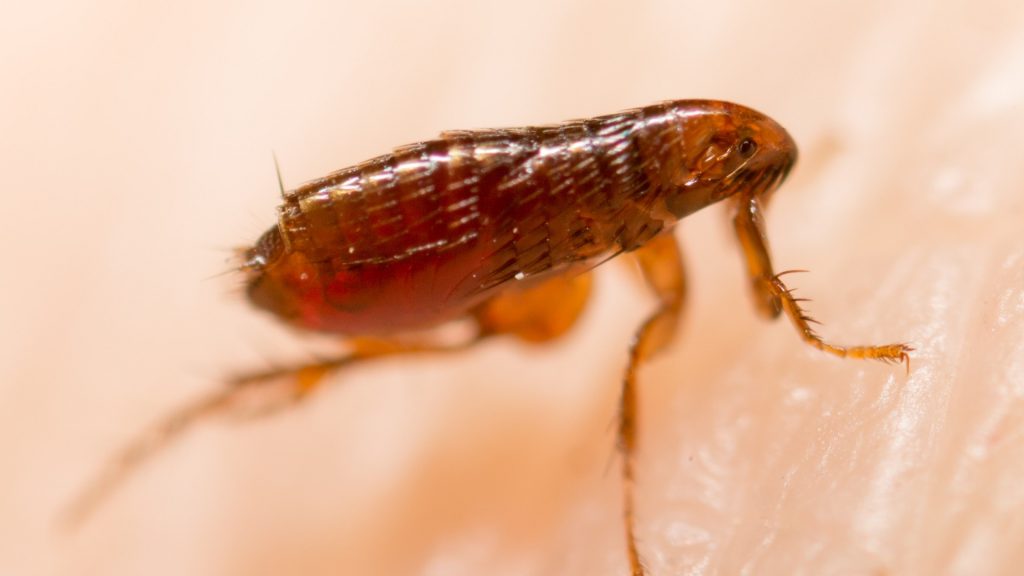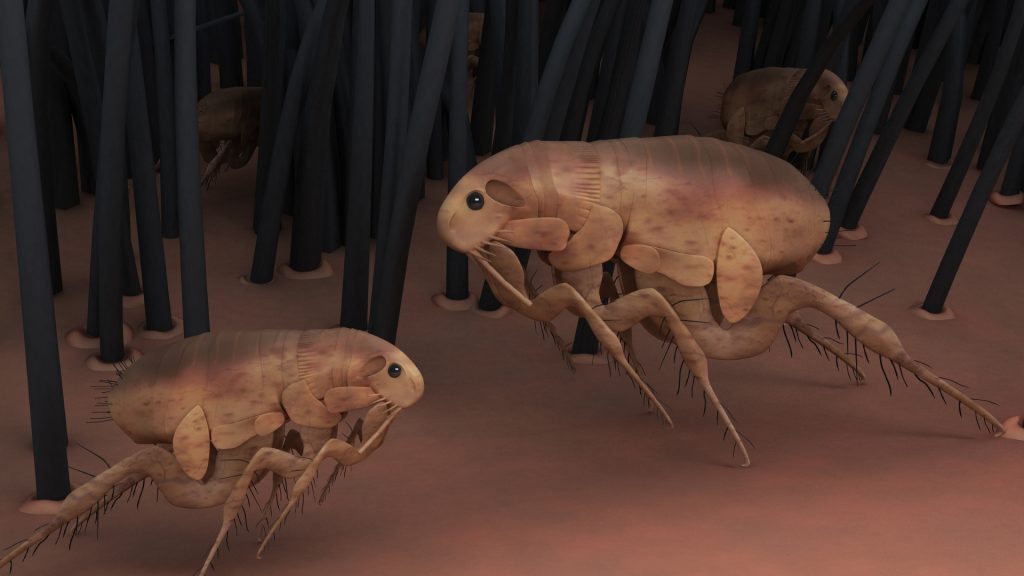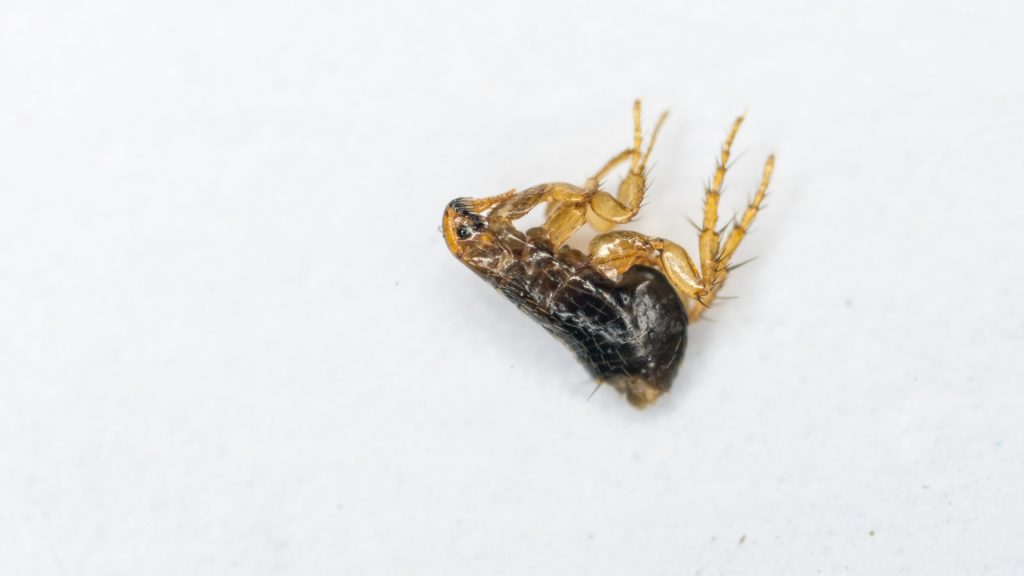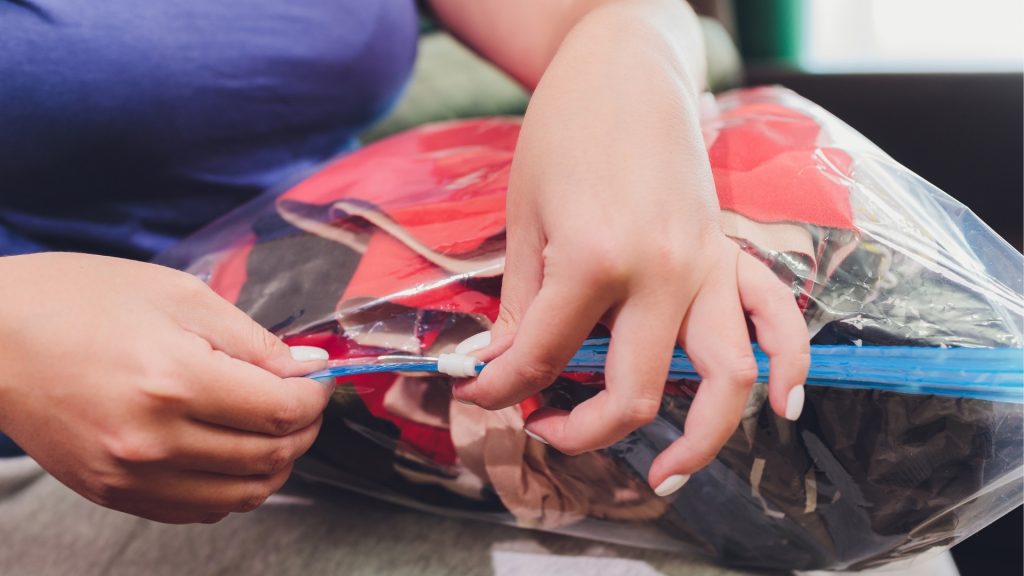If your home is infested with fleas, you know that killing them can be a frustrating, challenging experience. However, you can still use some tips and tricks to target fleas’ weaknesses and get rid of them for good.
Will bagging clothes kill fleas? Bagging clothes and other fabric items will kill fleas since fleas need oxygen to stay alive. Still, it can take more than five days for fleas to suffocate, even in a vacuum bag, so you will have to be persistent and patient.
So, let’s talk more about how fleas reproduce and what they need to survive at each stage of their lives. Then, we’ll teach you how to use vacuum bags to kill fleas and share some of the most effective pro tips for eliminating fleas from your clothing and other fabric items so you won’t ever get bugged by fleas again.
What Are Fleas?

Fleas are parasites that feed on the blood of dogs, cats, and other furry mammals. They are resilient and well-adapted to finding hosts, making them one of the most common pests that infest homes.
Fleas have a special status as one of the most annoying and unpleasant members of the insect family. When you have an infestation, it can seem impossible to get rid of them for good, but that’s just because you will have to understand how they live to target them.
Before you try to get rid of fleas, it is essential to understand how they reproduce, where they like to hide, and what they eat. That way, you will be able to eliminate them successfully.
Flea Life Cycle
Fleas go through four stages of development in their lives: egg, larva, pupa, and adult.
A flea’s life starts as an egg. Adult female fleas lay eggs one or two days after they have their first blood meal, and they can lay up to 50 eggs every day.
Eggs then fall from the mother’s host, often settling between fibers in carpeting, between floorboards, or in the creases and seams of furniture. Eggs hatch 5 to 10 days later as larvae.
Larvae eat the excrement of adult fleas. This excrement is black, brown, or red-colored, and it is made up of undigested blood. If you have fleas, you may see these tiny dark pellets before you can detect the adults who made them, but eliminating them is key to killing off the flea larvae.
After 5 to 15 days as larvae, the young fleas enter the pupal stage of development. Now, they will spin cocoons and lie dormant for 1 to 4 weeks before they emerge as adults.
Understanding the pupal stage is key to eliminating fleas from your home or yard. Flea pupae can remain in their cocoons for up to 12 months, and they will only emerge when they sense a host nearby. Some common triggers are heat, pressure, carbon dioxide, and sound.
Once the pupa emerges, it will look for a host to feed on. Once it finds a host, the adult will live for around 25 days before it dies. However, if it does not find a host, it will only live for up to two weeks.
Where Do Fleas Like To Live?

Fleas like to live on hosts with long, dense hair. When they cannot find a host, they hide and lay eggs in small cracks and crevices like fabric, furniture, and floorboards. Flea pupae hide in carpets and rugs and sometimes stow away in closets and drawers.
Although fleas are resilient to freezing temperatures, they prefer warm, humid spaces. According to experts at the University of Missouri, the ideal conditions for flea development are 85° F (29.4° C) and 85% relative humidity.
That makes warm, dark, humid spaces the best places for fleas to lay their eggs and gather.
Do Fleas Stay on Clothes?

Fleas can stay on clothes if they are disrupted while feeding or if the flea is still in the egg, larval, or pupal stages. If an adult flea gets on a human, it will not stay there for long because most fleas don’t like the taste of human blood.
Additionally, they have adapted to only get the proper nutrients from animal blood.
So, if you don’t have pets, how can fleas get into your home?
If a flea jumped on you, it might realize that you were not the ideal host and hide in your clothing seams until it could find a better animal to feed on.
If a flea lays eggs on clothing, the young fleas could stay there until they have developed into adults. Pupal fleas especially like to live in clothes because they will be kept warm and moist by your body.
So, although adult fleas don’t like to stay in clothing, fabrics, and clothes are ideal spots for young fleas to keep warm and safe.
Related: Does The Dryer Kill Fleas?
How Long Can Fleas Live Without a Host and Air?

Fleas can only live for one to five days without a host and air. However, if they have access to fresh air but no host, they can live for up to two weeks.
So, if you want to kill your fleas, they only have a few weaknesses, and they are resilient insects that tolerate even the worst conditions. Still, fleas need air and a host to stay alive. Fleas need oxygen to live.
In a recent study published in the Journal of Experimental Biology, scientists proved that fleas who live on burrowing mammals die faster than other fleas since there is not enough airflow in underground tunnels.
So, without air, fleas suffocate within 1 to 5 days. However, fleas can also drown, and they typically die within one day of being submerged in water.
Fleas also need a host to stay alive as adults, but they can survive for up to two weeks without a blood meal. That means that fleas will die quicker if you deprive them of air than if you deny them of a host.
Pupal and larval fleas do not need a host, though, so young fleas can survive for at least 30 days without a host. That makes eliminating them extremely difficult, but you can still suffocate or poison them.
How To Use Vacuum Storage Bags To Kill Fleas

To use vacuum storage bags to kill fleas:
Step 1: Remove all of the infested clothes, blankets, and fabrics from your home.
Step 2: Put the fabric items in a vacuum storage bag and seal them as quickly as possible.
- 6 x JUMBO SIZE SPACE BAGS VACUUM STORAGE BAGS - These jumbo...
- AIRTIGHT VACUUM STORAGE BAGS FOR COMFORTERS AND BLANKETS -...
- VACUUM STORAGE BAGS JUMBO SIZE INCREASED STORAGE - Save 80% on...
- BEST SPACE SAVER BAG ON THE MARKET - These vacuum storage bags...
- HAND PUMP INCLUDED - We provide you with a convenient hand pump...
Step 3: Vacuum all of the air out of the vacuum bag.
Step 4: Put pressure on the bag and squeeze the fabrics to trigger pupal fleas to merge from their cocoons.
Step 5: Leave the vacuum bag in a sunny spot for at least five days or freeze it for five days.
Step 6: If possible, launder the fabrics in hot, soapy water or dry them on high heat to kill unhatched eggs or pupal fleas.
Using a vacuum storage bag will kill adult fleas, starving them and depriving them of air. Still, it will take much longer to rid your clothing for flea eggs, larvae, and pupae.
Related: How To Kill Fleas?
Can You Use Ordinary Bags for Flea Control?
You can use ordinary airtight, sealing bags to contain and kill fleas. However, the bag must be airtight since fleas are so small and can escape through the tiniest holes. Also, the bag will only work if there is no airflow since the goal is to suffocate the fleas.
If you do not want to invest in vacuum bags, use Jumbo Size Ziploc Bags from Amazon instead since they have a double seal zipper and are large enough to hold curtains, rugs, clothes, and towels.
- Ziploc Big Bags have a pleated bottom and secure Double Zipper...
- Flexible shape and heavy-duty plastic. BPA free
- Convenient built-in handles
- Protects from moisture, dust, and pests
- Fits into places where storage boxes can't
If you choose to use airtight bags that are not vacuum-sealed, you may need to wait even longer for the fleas to die. That’s because you won’t be able to remove all the air from the bag when you seal it.
Still, you should push all of the air out of the bag while you seal it if you can to remove as much oxygen as possible. Usually, a week or two in an airtight bag does the trick.
Other Effective Methods for Killing Fleas on Clothes

In addition to using airtight or vacuum bags to kill fleas on clothes, you can :
- Wash your clothes in hot water
- Dry clothes on a high-heat setting
- Freeze your clothes in an airtight bag for at least five days.
- Pour diatomaceous earth in your clothes and drawers, leave it for at least 12 hours, and vacuum it up.
- Launder your clothes in baking soda and vinegar.
- Treat your clothes with a pyrethrum bug spray to force the fleas to leave.
- Vacuum frequently to eliminate pupae and eggs and seal your vacuum bag in an airtight bag before disposing of it.
- Fleas are uncomfortable, gross, and itchy, and there is nothing worse than having them in your clothes. So, what else can you do to eliminate them from your favorite sweaters?
When it comes to killing fleas, persistence and patience are key. It will take several treatments for several months to eliminate the fleas since they can hide deep within fibers at their egg, larval, and pupal stages.
Still, the more you use these methods, the better the results will be.
Related: Does Baking Soda Kill Fleas?
Summary
Fleas are parasites that like to hide in warm places away from light, and they can even get in your clothes. If you want to get rid of them, you will need to use their weaknesses against them. You can suffocate them, drown them, freeze them, overheat them, or deprive them of food to kill them. One great way to do that is to place your fabrics like clothes in a vacuum bag or airtight bag, freeze them or leave them in the sunlight.
List of Sources
Zentko, D. C., Richman, D. L. (2021). Ctenocephalides felis (Bouché). University of Florida.
Potter, M. F. (2018). Flea Control and Prevention. University of Kentucky Entomology.
Giedt, E. J. (2017). Flea Control. Oklahoma State University Extension.
Merchant, M., Robinson, J. (2018). Controlling Fleas – How do you get rid of fleas in your home? Texas A&M AgriLife Extension.
Netherton, S. (2014). Fight Fleas at All Their Life Stages. University of Illinois College of Veterinary Medicine.
- How to Get Rid of Copperheads | Practical Guide - August 27, 2023
- How to Get Rid of Corn Snakes | What Makes Them Aggressive? - August 27, 2023
- How to Get Rid of Alligators | Safety Measures and Removal Methods - July 16, 2023


